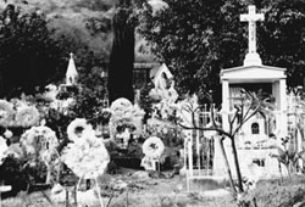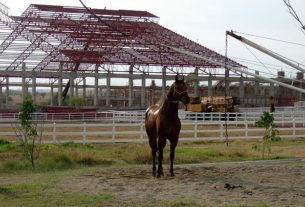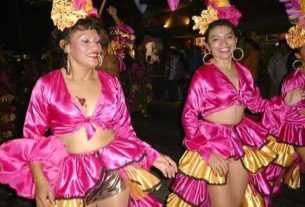As Ms. Spiegel writes in her introduction: “San Miguel de Allende is infused with history: every cobblestone seems to hide secrets about its past. All the stores and boutiques housed in former colonial mansions; all the restaurants that occupy the courtyards of elegant villas, all the gigantic wooden doorways through which the carriages of the gentry once drove, remind us that centuries back, that an exciting and rich history unfolded here.”
Her account mainly covers what she calls the viceregal period, also known as the colonial era, which lasted from 1521 to 1821. Mexico at that time was the richest and most populous of Spain’s overseas dominions. It was at the end of this period, in 1810, that the War of Independence erupted with San Miguel and the nearby town of Dolores being the focal points of that outbreak. The war was to last eleven years.
The first section of the book covers the social system of what was then called New Spain and explores the community of San Miguel el Grande, which was the town’s first name. She examines the political and economic aspects of the community and we meet some of the leading citizens. The second section describes the problems that beset the viceregency before the war erupted. Part three tells about the war which ended with a declaration of independence from Spain and the creation of a brand new entity — Mexico.
It was a more complex society than you would ever expect to find. It comprised two social categories of Spaniards: peninsulares, those Spaniards who were born in Spain and who were on the top of the pecking order, and criollos or creoles, those Spaniards who were born in the New World. Then there were the mestizos, people whose heritage included both Indians and Spaniards, and the mulattos, the people whose heritage included both Africans and Spaniards. Then of course, there were the Indians, the original inhabitants of the area. In the late 1700s, for instance, Indians comprised 60 per cent of the population, Spaniards 22 per cent and castas (Africans, mulattos and mestizos) about 18 per cent.
There was very little mixing of the various groups and it all added up to a society that was very conscious of social and racial categories. Citizens were even taxed according to the category they belonged to. Interracial mixing was to come later.
At the upper end of the scale one writer draws attention to “the luxury of the great families, their gambling habits and the luxury of their houses, the splendor of their furniture, their many domestics, their carriages drawn by four or six mules, all in contrast to the poor, who dress in rags and are the victims of every vice.” In stark contrast, the adjectives that are used to describe the Indians were “oppressed.” “unhappy,” “miserable,” “despised,” and “oppressed.” All 18th century observers agreed that the Indians lived in a state of utmost squalor.
To quote one writer: “Most Spaniards, if they thought about it at all, saw nothing morally wrong with slavery nor with the various means to obtain, through coercion, the labor of Indians. The prevailing ethos of the colonial society not only condoned but actively encouraged the exploitation of the Indians and the blacks.”
Brutality seemed to be the order of the day and the many horror stories running through the text illustrate those cruelties.
The two men who figure most prominently in this text are Father Miguel Hidalgo and Ignacio de Allende, the man who eventually gave his name to the community. They are a couple of interesting figures.
Hidalgo was a parish priest, born in 1753 in the town of Penjamo. He was quite an unusual figure – a priest who lived with several women and fathered three children. He thought the pope was stupid and that the Church was run by a bunch of ignoramuses. Although he was not active in any of the politics of that area or that time, he was to eventually become the Generalisimo of an army of tens of thousands of revolutionaries. He, of course, was the man who gave the famous Grito, the call to arms, which is regarded as the symbolic start of the uprising.
Ignacio de Allende was born in 1769 into an upper class family who were very prominent members of the local gentry. He was a committed revolutionary at an early age. He was an active member of a “literary society” in Querétaro composed of highly dedicated revolutionaries who talked more about insurrection than literature.
Both men led their peasant army of some 40,000 men against the numerically inferior but better trained army of royalist troops. There were battles won and lost on both sides over a six month period. In the end, however, Hidalgo and Allende were betrayed and led into ambush. Hidalgo, who had previously been excommunicated by the Church, was executed. He was 58 years old. Allende was executed at the same time. Both men were to give their names to their respective communities – San Miguel de Allende and Dolores Hidalgo.
It’s a fascinating and complex story, even if you have some prior knowledge of that aspect of Mexican history and how Mexico finally achieved its independence from Spain. Ms Spiegel’s book is thoroughly researched and she has many stories to tell along the way.
Another bonus for readers are the handsome illustrations throughout, on almost every page. The lady has obviously committed a great deal of time and effort to producing this volume.
“San Miguel and the War of Independence” is in the process of becoming available at the usual internet sites. At the moment the best and fastest way to obtain a copy is to make a direct order from the author at [email protected]. Copies are also now available from www.barnesandnoble.com.
In my humble O:Ms. Spiegel mentions in her intro that she couldn’t find any serious books about the area when she first went there to live. So she decided to write the book she would like to have found. And here it is.
San Miguel and the War of Independence
By Mamie Spiegel, 2005
Illustrated paperback
Available from Amazon Books: Paperback



